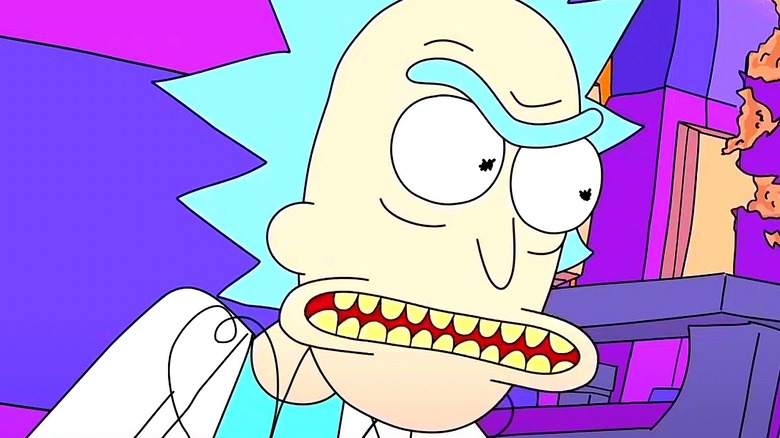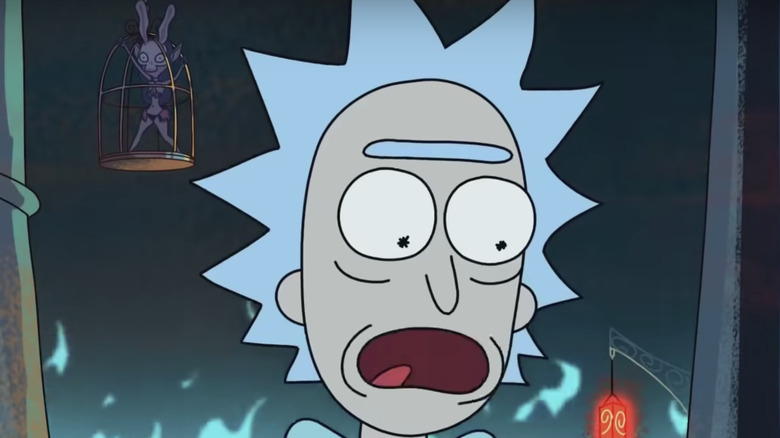Why Rick's Dream Hopper In Rick & Morty Makes No Sense
"Rick and Morty" is one of the most fantastical shows on television. The sci-fi comedy series, which has won two Emmys, is widely beloved by fans across the world — it has a 9.2 rating on IMDb, making it one of the highest-rated shows on the site. At the heart of the show is maniacal scientist Rick Sanchez (Justin Roiland), one of the most inventive individuals in the galaxy. Joining Rick in his various adventures and escapades across the universe is his anxious and awkward grandson Morty Smith (also voiced by Justin Roiland).
The animated series oscillates between a variety of different genres, styles, and frameworks per episode, making each new half-hour special and unique. One recurring constant in the show is Rick's imaginative and mind-bending inventions, some of which have gone on to define the series — like Rick using a device to turn himself into a pickle.
Some of the inventions in "Rick and Morty" are based in science, like the interdimensional cable box (giving access to TV programming in every dimension), which is rooted in the multiverse theory (via Live Science). Other inventions are purely nonsensical and a perfect example of speculative sci-fi, like the ever-popular shrink and growth rays. Then, there are some of Rick's devices – like the dream hopper — that just plain don't make sense no matter how much we try to justify their existence.
Rick and Morty shouldn't be able to visit different dreams
Season 1, Episode 2 of "Rick and Morty," titled "Lawnmower Dog," sees Rick utilizing a device to hop between different dreams to influence dreamers. If that plot sounds familiar, it's because it's a blatant parody of Christopher Nolan's "Inception." In the episode, Rick and Morty hop from dream to dream using the device in a bid to influence the latter's math teacher to raise his grades.
As inventive as the idea is, the dream hopper makes little to no sense because human consciousness isn't connected (as far as we know). Through the cloud, costly servers, and interconnected smart devices, we can access each other's files and data because these products are connected through vast information networks. It's how we're able to text or play online games with one another — and one day, potentially, we might even exist in the shared metaverse.
But at this current junction, human consciousness isn't yet connected via a server, which means it's impossible for someone to penetrate the dream of another person and influence it. That's not to say that one day our minds won't be connected, as it's entirely possible that scientists and inventors might be able to place implants that can connect our minds — though that will probably take years to manifest, if at all.
For now, the dream hopper that Rick uses is nothing but pure fiction. But who knows? Maybe one day we'll be able to join and witness each other's dreams, just like in "Inception."

